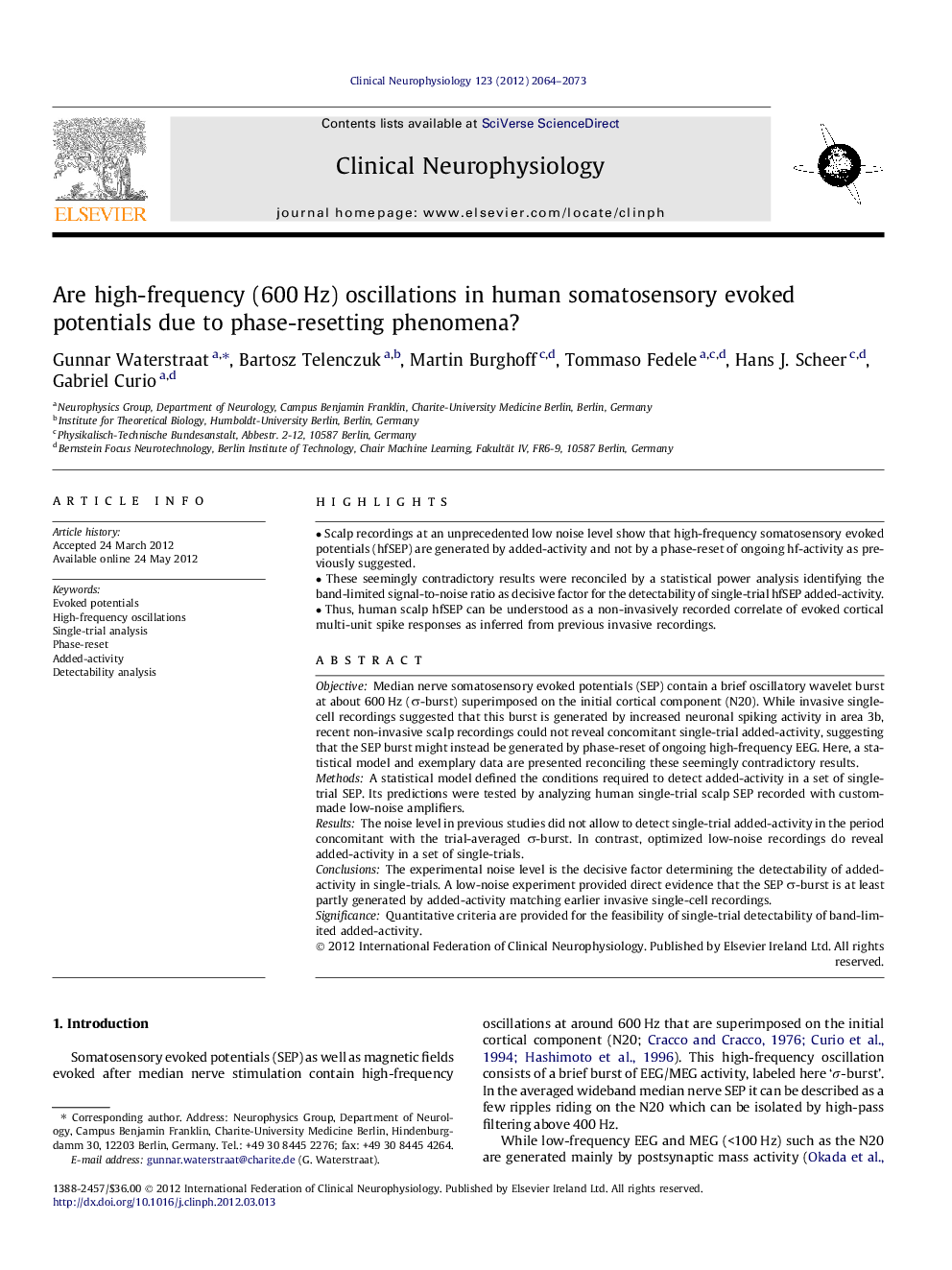| Article ID | Journal | Published Year | Pages | File Type |
|---|---|---|---|---|
| 3045391 | Clinical Neurophysiology | 2012 | 10 Pages |
ObjectiveMedian nerve somatosensory evoked potentials (SEP) contain a brief oscillatory wavelet burst at about 600 Hz (σ-burst) superimposed on the initial cortical component (N20). While invasive single-cell recordings suggested that this burst is generated by increased neuronal spiking activity in area 3b, recent non-invasive scalp recordings could not reveal concomitant single-trial added-activity, suggesting that the SEP burst might instead be generated by phase-reset of ongoing high-frequency EEG. Here, a statistical model and exemplary data are presented reconciling these seemingly contradictory results.MethodsA statistical model defined the conditions required to detect added-activity in a set of single-trial SEP. Its predictions were tested by analyzing human single-trial scalp SEP recorded with custom-made low-noise amplifiers.ResultsThe noise level in previous studies did not allow to detect single-trial added-activity in the period concomitant with the trial-averaged σ-burst. In contrast, optimized low-noise recordings do reveal added-activity in a set of single-trials.ConclusionsThe experimental noise level is the decisive factor determining the detectability of added-activity in single-trials. A low-noise experiment provided direct evidence that the SEP σ-burst is at least partly generated by added-activity matching earlier invasive single-cell recordings.SignificanceQuantitative criteria are provided for the feasibility of single-trial detectability of band-limited added-activity.
► Scalp recordings at an unprecedented low noise level show that high-frequency somatosensory evoked potentials (hfSEP) are generated by added-activity and not by a phase-reset of ongoing hf-activity as previously suggested. ► These seemingly contradictory results were reconciled by a statistical power analysis identifying the band-limited signal-to-noise ratio as decisive factor for the detectability of single-trial hfSEP added-activity. ► Thus, human scalp hfSEP can be understood as a non-invasively recorded correlate of evoked cortical multi-unit spike responses as inferred from previous invasive recordings.
